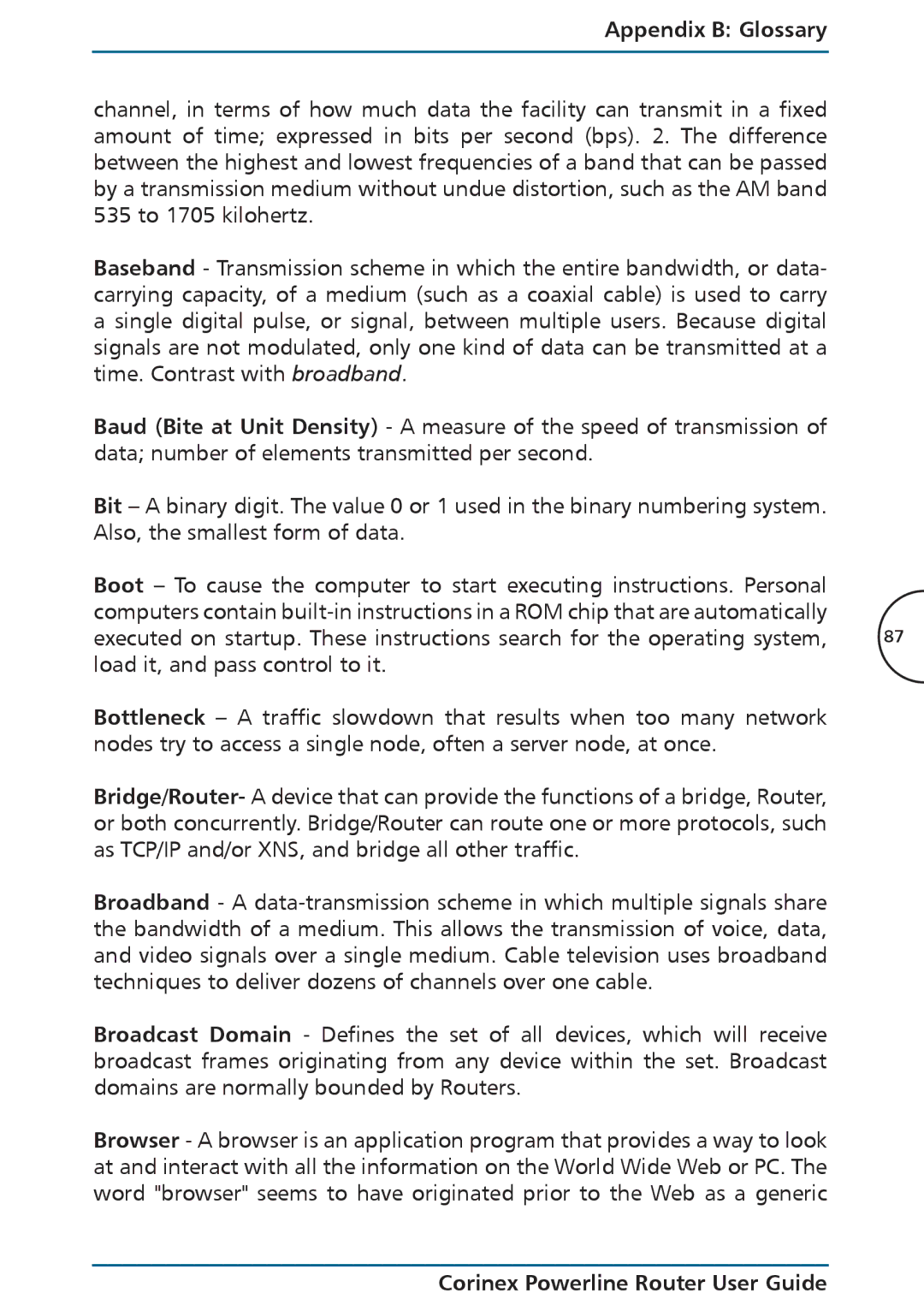
Appendix B: Glossary
channel, in terms of how much data the facility can transmit in a fixed amount of time; expressed in bits per second (bps). 2. The difference between the highest and lowest frequencies of a band that can be passed by a transmission medium without undue distortion, such as the AM band 535 to 1705 kilohertz.
Baseband - Transmission scheme in which the entire bandwidth, or data- carrying capacity, of a medium (such as a coaxial cable) is used to carry a single digital pulse, or signal, between multiple users. Because digital signals are not modulated, only one kind of data can be transmitted at a time. Contrast with broadband.
Baud (Bite at Unit Density) - A measure of the speed of transmission of data; number of elements transmitted per second.
Bit – A binary digit. The value 0 or 1 used in the binary numbering system. Also, the smallest form of data.
Boot – To cause the computer to start executing instructions. Personal computers contain
executed on startup. These instructions search for the operating system, 87 load it, and pass control to it.
Bottleneck – A traffic slowdown that results when too many network nodes try to access a single node, often a server node, at once.
Bridge/Router- A device that can provide the functions of a bridge, Router, or both concurrently. Bridge/Router can route one or more protocols, such as TCP/IP and/or XNS, and bridge all other traffic.
Broadband - A
Broadcast Domain - Defines the set of all devices, which will receive broadcast frames originating from any device within the set. Broadcast domains are normally bounded by Routers.
Browser - A browser is an application program that provides a way to look at and interact with all the information on the World Wide Web or PC. The word "browser" seems to have originated prior to the Web as a generic
